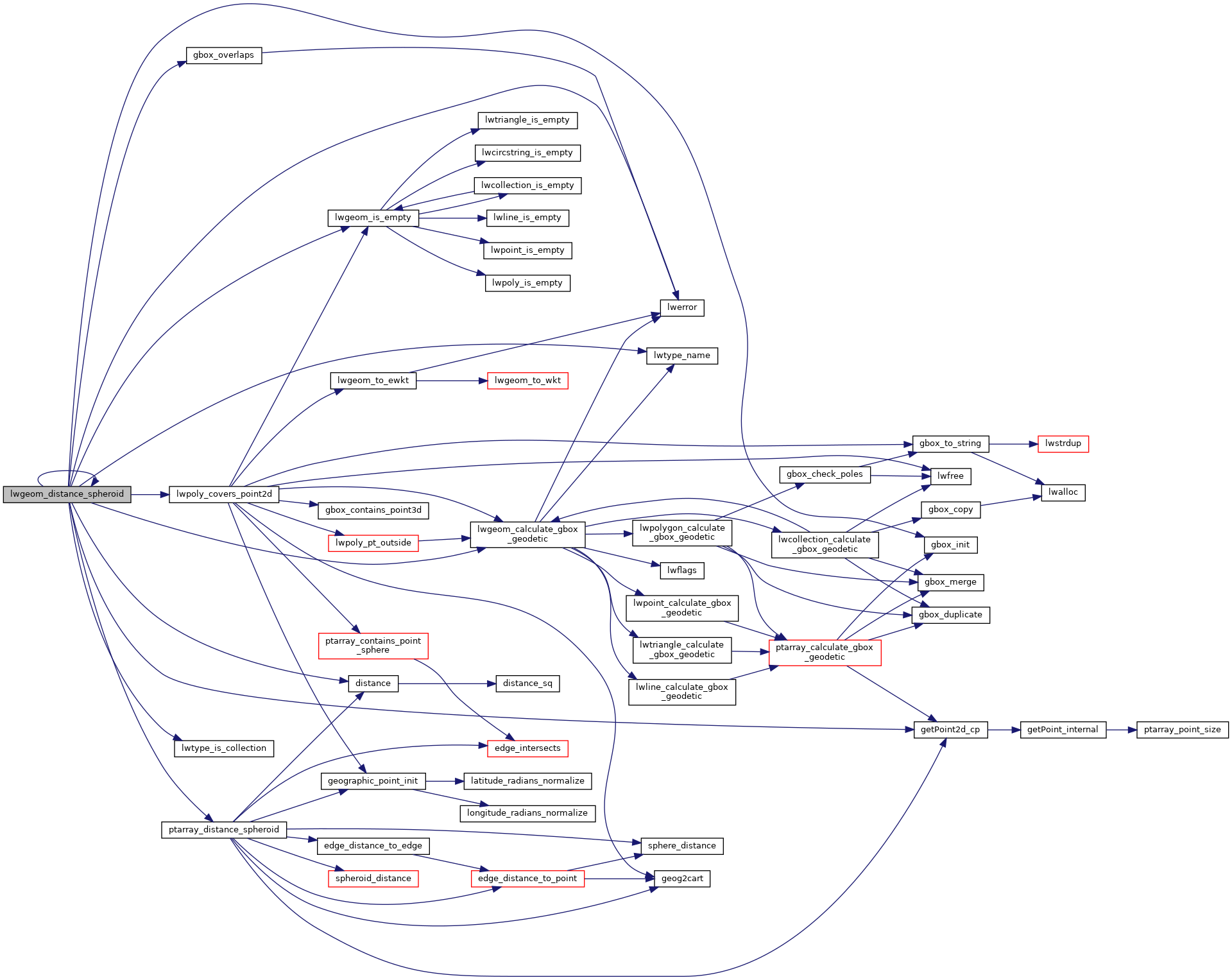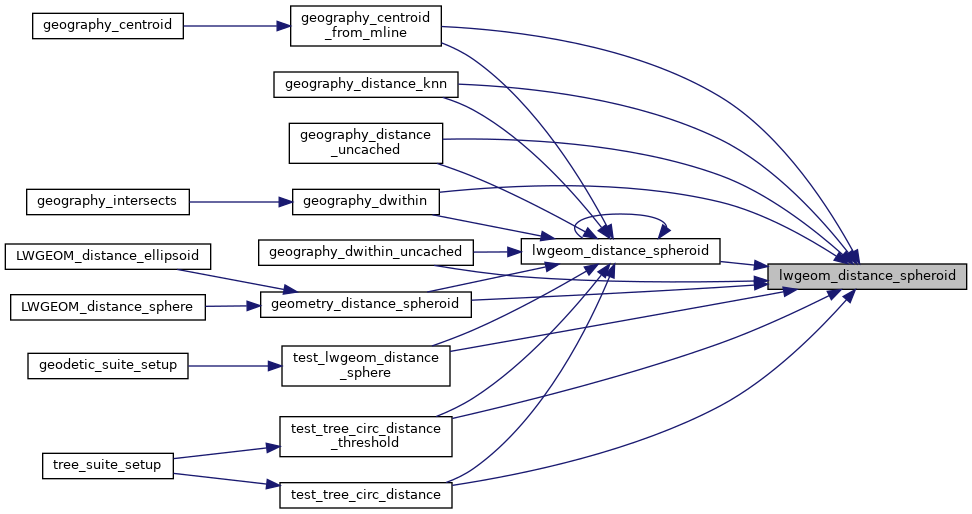Calculate the distance between two LWGEOMs, using the coordinates are longitude and latitude.
Calculate the geodetic distance from lwgeom1 to lwgeom2 on the spheroid.
Return immediately when the calculated distance drops below the tolerance (useful for dwithin calculations). Return a negative distance for incalculable cases.
2068 uint8_t type1, type2;
2078 LWDEBUGF(4,
"entered function, tolerance %.8g", tolerance);
2087 type1 = lwgeom1->
type;
2088 type2 = lwgeom2->
type;
2092 gbox1 = *(lwgeom1->
bbox);
2098 gbox2 = *(lwgeom2->
bbox);
2113 pa1 = ((
LWPOINT*)lwgeom1)->point;
2115 pa1 = ((
LWLINE*)lwgeom1)->points;
2118 pa2 = ((
LWPOINT*)lwgeom2)->point;
2120 pa2 = ((
LWLINE*)lwgeom2)->points;
2138 lwpoly = (
LWPOLY*)lwgeom2;
2143 lwpoly = (
LWPOLY*)lwgeom1;
2154 for ( i = 0; i < lwpoly->
nrings; i++ )
2177 lwline = (
LWLINE*)lwgeom1;
2178 lwpoly = (
LWPOLY*)lwgeom2;
2182 lwline = (
LWLINE*)lwgeom2;
2183 lwpoly = (
LWPOLY*)lwgeom1;
2187 LWDEBUG(4,
"checking if a point of line is in polygon");
2193 LWDEBUG(4,
"checking ring distances");
2196 for ( i = 0; i < lwpoly->
nrings; i++ )
2199 LWDEBUGF(4,
"ring[%d] ring_distance = %.8g", i, ring_distance);
2229 for (i = 0; i < lwpoly1->
nrings; i++)
2231 for (j = 0; j < lwpoly2->
nrings; j++)
2233 double ring_distance =
2239 check_intersection);
2255 for ( i = 0; i < col->
ngeoms; i++ )
2258 col->
geoms[i], lwgeom2, spheroid, tolerance);
2274 for ( i = 0; i < col->
ngeoms; i++ )
int gbox_overlaps(const GBOX *g1, const GBOX *g2)
Return LW_TRUE if the GBOX overlaps, LW_FALSE otherwise.
void gbox_init(GBOX *gbox)
Zero out all the entries in the GBOX.
int lwtype_is_collection(uint8_t type)
Determine whether a type number is a collection or not.
#define POINTTYPE
LWTYPE numbers, used internally by PostGIS.
const char * lwtype_name(uint8_t type)
Return the type name string associated with a type number (e.g.
#define LW_TRUE
Return types for functions with status returns.
#define FLAGS_GET_GEODETIC(flags)
int lwpoly_covers_point2d(const LWPOLY *poly, const POINT2D *pt_to_test)
Given a polygon (lon/lat decimal degrees) and point (lon/lat decimal degrees) and a guaranteed outsid...
double lwgeom_distance_spheroid(const LWGEOM *lwgeom1, const LWGEOM *lwgeom2, const SPHEROID *spheroid, double tolerance)
Calculate the distance between two LWGEOMs, using the coordinates are longitude and latitude.
int lwgeom_calculate_gbox_geodetic(const LWGEOM *geom, GBOX *gbox)
Calculate the geodetic bounding box for an LWGEOM.
static double ptarray_distance_spheroid(const POINTARRAY *pa1, const POINTARRAY *pa2, const SPHEROID *s, double tolerance, int check_intersection)
#define LWDEBUG(level, msg)
#define LWDEBUGF(level, msg,...)
void void lwerror(const char *fmt,...) __attribute__((format(printf
Write a notice out to the error handler.
static const POINT2D * getPoint2d_cp(const POINTARRAY *pa, uint32_t n)
Returns a POINT2D pointer into the POINTARRAY serialized_ptlist, suitable for reading from.
static int lwgeom_is_empty(const LWGEOM *geom)
Return true or false depending on whether a geometry is an "empty" geometry (no vertices members)
static double distance(double x1, double y1, double x2, double y2)

